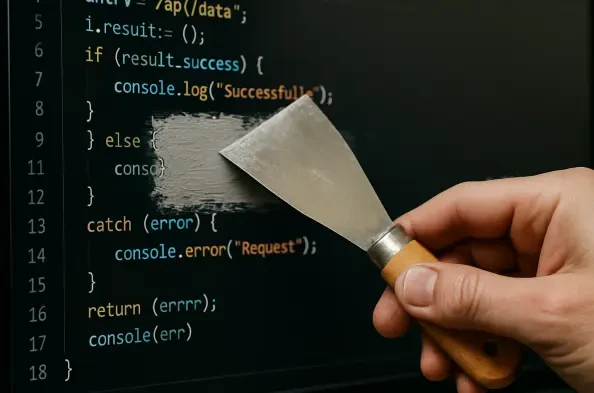In an era where digital battlegrounds are as fiercely contested as physical ones, a startling trend has emerged among cybercriminals that redefines the nature of cyber warfare, showing how sophisticated threat actors are not only exploiting vulnerabilities to infiltrate systems but also taking the unprecedented step of patching these flaws after gaining access to lock out rival attackers. This dual strategy of offense and defense has come to light through a recent campaign targeting cloud-based Linux systems via a critical flaw in Apache ActiveMQ, known as CVE-2023-46604. This remote code execution vulnerability, with a staggering 94.44% likelihood of exploitation within 30 days as per its EPSS score, has become a prime target for malicious actors. What sets this campaign apart is the calculated approach of securing compromised systems against others, revealing a new layer of operational cunning in the cybercriminal underworld. This behavior raises pressing questions about the evolving tactics of adversaries and the challenges faced by defenders in keeping pace with such innovative threats.
Unveiling a Sophisticated Attack Strategy
The campaign exploiting CVE-2023-46604 in Apache ActiveMQ showcases a level of sophistication rarely seen in typical cyber threats. Attackers target vulnerable cloud Linux endpoints with reconnaissance commands, establishing a robust command and control (C2) infrastructure that leverages tools like Sliver implants and Cloudflare Tunnels for covert, sustained access. Beyond initial entry, these adversaries modify SSH configurations to enable root login—a feature often disabled by default in modern Linux distributions—and deploy a novel downloader called DripDropper. This encrypted PyInstaller ELF file requires password authentication to execute and connects to adversary-controlled Dropbox accounts for C2 operations. Persistence is further ensured by altering anacron and SSH configuration files, even changing default shells for innocuous user accounts like ‘games’ to /bin/sh. Such multi-layered tactics illustrate how deeply attackers embed themselves into compromised systems, making detection and removal a daunting task for security teams.
What makes this campaign particularly alarming is the adversaries’ post-exploitation behavior, which blends offensive and defensive maneuvers into a single strategy. After gaining access through the Apache ActiveMQ vulnerability, these cybercriminals download legitimate ActiveMQ JAR files from Apache Maven repositories to patch the very flaw they exploited. This self-remediation serves a dual purpose: it reduces the chance of detection by vulnerability scanners and prevents other threat actors from exploiting the same weakness. By securing their foothold in this manner, attackers maintain exclusive control over the compromised systems, effectively turning the exploit into a private gateway. This calculated move underscores a profound understanding of both the technical landscape and the competitive nature of cybercrime, where control over a system can be as valuable as the data or resources it holds. The implications of such actions extend beyond individual breaches, signaling a shift toward more territorial and strategic cyber operations.
Historical Context and Malware Connections
Apache ActiveMQ’s CVE-2023-46604 is not an isolated target but part of a broader history of exploitation by various malware strains, underscoring its appeal to cybercriminals. This vulnerability has been linked to ransomware families such as TellYouThePass, Ransomhub, and HelloKitty, as well as the Kinsing cryptomining malware, which have all capitalized on the flaw to devastating effect. The widespread use of ActiveMQ as an open-source message broker in enterprise environments makes it a high-value target, offering attackers a gateway to critical systems. The current campaign builds on this legacy, employing advanced persistence mechanisms that ensure long-term access while evading traditional security measures. By integrating legitimate cloud platforms like Dropbox for C2 communications, attackers further obscure their activities, blending malicious traffic with routine network operations. This convergence of historical exploitation patterns with modern evasion techniques highlights the persistent threat posed by such vulnerabilities in widely adopted software.
The strategic patching of exploited vulnerabilities by attackers in this campaign marks a significant evolution from past behaviors associated with ActiveMQ exploits. Unlike earlier attacks where the focus was solely on maximizing damage or profit through ransomware or cryptomining, this operation prioritizes exclusivity and stealth. Patching CVE-2023-46604 after exploitation not only blocks rival actors but also complicates forensic analysis, as patched systems may appear secure to automated scanners. This defensive tactic, paired with the deployment of sophisticated tools like DripDropper, reflects a nuanced approach to cybercrime where maintaining control over a compromised environment is as critical as the initial breach. The historical context of ActiveMQ exploitation thus serves as a backdrop to understand how threat actors adapt and refine their methods over time, leveraging past successes to craft more resilient and elusive attack frameworks that challenge even the most robust security defenses.
Defensive Measures Against Evolving Threats
As cybercriminals adopt increasingly sophisticated tactics, organizations must rethink their defensive strategies to address these hybrid threats. The campaign targeting cloud Linux systems through CVE-2023-46604 emphasizes the need for proactive vulnerability management, ensuring that critical flaws are patched before they can be exploited. Beyond timely updates, implementing policy-based SSH management is essential to prevent unauthorized configuration changes, such as enabling root login. Strict network ingress controls can further limit external access to vulnerable endpoints, while comprehensive cloud logging helps detect anomalous activities that might indicate a breach. These measures, when combined, create a multi-layered defense capable of countering the intricate persistence mechanisms employed by modern adversaries. Staying ahead of such threats requires a shift from reactive to anticipatory security practices that prioritize prevention over response.
Looking back, the response to this campaign revealed critical gaps in many organizations’ security postures that adversaries expertly exploited. Reflecting on past incidents, it became evident that robust monitoring and rapid response protocols were often lacking, allowing attackers to establish deep footholds. The integration of advanced threat intelligence into security operations proved vital in identifying patterns of behavior, such as the use of legitimate platforms for C2 communications. Moving forward, the lessons learned underscored the importance of continuous adaptation in cybersecurity. Investing in automated detection tools, enhancing employee training on emerging threats, and fostering collaboration across industries to share threat intelligence emerged as key steps to mitigate future risks. By building on these insights, defenders can better prepare for the next wave of innovative cyber tactics, ensuring that the evolving landscape of digital threats is met with equally dynamic and resilient countermeasures.






